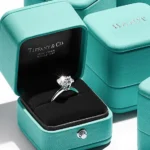In a crowded marketplace, only a few brands truly inspire and captivate our hearts. What sets them apart? Join us as we delve into the world of inspiring brands and explore their top-notch branding strategies. These brands masterfully tap into our deepest desires, creating an irresistible allure that keeps us coming back.
In this journey, we’ll uncover the secrets behind their success. From tapping into our need for belonging to fueling our hunger for personal growth, these brands know how to evoke powerful emotions. Through strategic storytelling and messaging, they create a resonance that lasts.
Get ready to explore these inspiring brands and discover how their branding strategies can transform your brand. Let’s unlock the true power of emotional branding together.
What exactly is an Inspiring Brand?
An inspiring brand goes beyond simply selling products or services and creates a deep emotional connection with its customers. It evokes feelings of inspiration, admiration, and loyalty among its audience.
The defining characteristic of an inspiring brand is its ability to engage customers on an emotional level. Customers become more than just consumers; they become advocates and ambassadors, actively promoting and supporting the brand. This emotional attachment surpasses the functional purpose of the brand and creates a sense of meaning and resonance in the lives of customers.
An inspiring brand encourages customers to not only buy its products or services but also become part of a larger community or movement. It fosters a sense of shared identity and provides customers with a sense of belonging and purpose.
Ultimately, an inspiring brand leaves a lasting impact, not just through its products or services, but by uplifting, motivating, and making a positive difference in the lives of its customers.
How to Make an Inspiring Brand?
A brand can become inspirational only if it employs a great Brand Strategy.
So, what exactly is a Brand Strategy? A brand strategy describes how the organization will establish rapport and favorability with the market. In order for customers to choose your company above the competition, your brand strategy must become distinctive in their eyes.
Brands must shape customers’ views in order to influence them. The action plan for modifying such impressions via both visual and verbal manifestations is known as a brand strategy. A strong brand strategy integrates all facets of a company’s operations and is both customer- and competition-focused.
It is linked to both the competitive business settings and the demands and feelings of customers.
The missions, values, and consumer promises of a brand are all included in a well-defined brand strategy. It also pertains to the manner in which the brand communicates them.
The large players are not the only ones that need a brand strategy. Companies that are introducing new products, startups, and small enterprises may all benefit from developing or modifying their brand strategy.
Even a charity may create a distinctive branding strategy to attract additional sponsors or contributors.
Important Elements of a Successful Brand Strategy
You may use a variety of strategic frameworks to establish your brand and influence customers’ impressions. However, the following essential elements must be included in any effective structure.
- Vision
- Mission
- Values
- Positioning
- Personality
- Voice
- Storytelling
- Tagline
- Loyalty
- Brand experience
- Competitive Awareness
You can see where each of the essential components mentioned above applies in the motivational brand examples that follow when we look at the tactics that make them so effective.
Examples of Inspiring Brands With Best Brand Strategy
Patagonia: Mission and Values

Patagonia‘s mission and vision statements perfectly capture its commitment to excellence, environmental stewardship, and using business as a force for positive change.
Their mission is simple yet powerful: “Build the best product, cause no unnecessary harm, use business to inspire and implement solutions to the environmental crisis.” This statement highlights their dedication to producing high-quality products while minimizing their ecological footprint and actively addressing the environmental challenges we face.
Patagonia’s vision extends beyond business success, emphasizing its love for wild and beautiful places and the responsibility to protect them. This vision statement reflects their belief that businesses should play an active role in preserving the environment.
Notably, Patagonia’s commitment is not just words. They back it up with action by donating a minimum of 1% of their sales to support grassroots environmental groups worldwide. This demonstrates their genuine dedication to making a tangible difference.
Patagonia’s mission and vision statements serve as compelling examples of how a company can articulate its values, goals, and commitment to sustainability. Their focus on building quality products, minimizing harm, and using business to inspire positive environmental solutions resonates with customers who share similar values and aspirations.
Tesla: Mission and Purpose

Tesla‘s mission and vision statements exemplify its commitment to revolutionizing the automotive industry and driving the transition to sustainable energy.
The mission statement portrays their primary objective: “To create the most compelling car company of the 21st century.” It then outlines its approach to achieving this goal: “By driving the world’s transition to electric vehicles.” The mission statement is clear, straightforward, and effective in conveying Tesla’s core purpose.
However, it is Tesla’s vision statement that truly stands out. The clever use of the word “accelerate” adds dynamism to their ambitious aspiration: “To accelerate the world’s transition to sustainable energy.” This vision statement reflects Tesla’s determination to propel the shift towards sustainable energy solutions and underscores their broader scope beyond electric vehicles. It encompasses their innovative energy solutions like Powerwall, Powerpack, and Solar Roof, allowing for further exploration and development in the field.
Tesla’s vision for sustainable energy resonates with countless individuals worldwide, capturing the imagination and fostering a sense of urgency in combating climate change. Their mission and vision statements demonstrate Tesla’s unwavering commitment to driving positive change and shaping a more sustainable future.
Red Bull: Brand personality, messaging

When it comes to brand personality, Red Bull is the epitome of energy and vigor. Its spirit is electrifying, captivating the imagination and igniting a sense of adventure.
Red Bull fearlessly aligns itself with a myriad of extreme sports, making its presence known in every niche activity imaginable. By doing so, Red Bull has etched itself as the embodiment of all things “Extreme” in the minds of its audience.
From its vibrant colors and iconic charging bull logo to its unwavering attitude, Red Bull exudes a distinct persona that resonates with individuals seeking thrills. Across various platforms, the brand flaunts an outrageous personality that leaves an indelible mark.
But Red Bull’s impact goes beyond marketing. It taps into the passions and adrenaline of its target audience, creating a shared sense of excitement and unity. It fosters a community of like-minded individuals who embrace the unconventional and savor the exhilaration of living life to the fullest.
In essence, Red Bull is more than just a beverage; it symbolizes a way of life that rejects mediocrity and embraces the extraordinary. Its brand personality encapsulates the spirit of adventure, inspiring individuals to break free from constraints and embrace the thrill of the unknown. Red Bull is the ultimate embodiment of living boldly and chasing one’s passions without hesitation.
McDonald’s: Brand positioning, Tagline

McDonald’s brand positioning strategy is built upon the concept of delivering “good food, fast.” The company has successfully established itself as a quick-service restaurant that provides a convenient option for customers seeking a satisfying meal on the go. This strategic approach has played a significant role in maintaining McDonald’s dominant position in the fast-food industry.
The slogan “I’m Lovin’ It” epitomizes the emotional connection that customers have with the brand. It reflects McDonald’s focus on creating a positive and enjoyable dining experience. The catchy tagline has become synonymous with the brand, further reinforcing its brand positioning.
Through its brand positioning strategy, McDonald’s has successfully positioned itself as a go-to destination for individuals seeking quick and convenient dining options. By consistently delivering on its promise of “good food, fast” and fostering an emotional connection with customers, McDonald’s continues to be a leader in the fast-food industry.
Dove: Brand Voice

Dove is celebrated for its empowering and uplifting brand voice that inspires customers to embrace their inner beauty. At the heart of Dove’s messaging is the promotion of body positivity, female empowerment, and self-love.
Dove’s brand voice serves a dual purpose: it raises awareness about important societal issues and reinforces the brand’s values. Through powerful communication, Dove fosters a message of inclusivity, acceptance, and celebrating one’s unique beauty.
Dove’s brand voice is a catalyst for change, encouraging individuals to embrace their authentic selves and challenge conventional beauty standards. Through their inclusive and powerful messaging, Dove has successfully created a brand that goes beyond superficial beauty and instead focuses on promoting self-confidence, acceptance, and empowerment.
Lego: Brand Values

Lego’s brand is deeply rooted in its core values, which permeate both its company culture and its products/services. The values of fun, creativity, imagination, learning, caring, and quality revolve around the essence of play and serve as the foundation of Lego’s identity.
These brand values are evident in every aspect of the Lego experience, from their engaging and imaginative products designed for children to their people-centric and positive company culture. Lego’s commitment to these values is clear and straightforward, allowing them to resonate throughout the brand and all of its experiences.
By keeping their values simple and easy to understand, Lego ensures that they can be embraced and reflected in every interaction with the brand. This simplicity empowers the values to spread and flourish across the entire Lego ecosystem.
Lego’s brand is a testament to the power of concise expressions of values. By staying true to its core values and infusing them into its products and culture, Lego has established itself as a beloved brand that embodies the joy of play and creativity.
Spotify: Brand storytelling
Spotify leverages the power of data storytelling through its annual marketing campaign known as “Spotify Wrapped.” This unique initiative enables users to reflect on their past year’s music consumption on the platform. Beyond just providing statistics on listening habits, Spotify Wrapped offers insights into users’ top streamed artists, most-played songs, and more.
By blending nostalgia with hyper-personalization, Spotify conveys a message of genuine care for its users and celebrates their individual interests. The campaign taps into users’ emotional connection with their favorite music and evokes a sense of shared experiences.
Through Spotify Wrapped, Spotify showcases its dedication to delivering a personalized and meaningful music experience. By using data to create a personalized narrative, Spotify reinforces its position as a platform that understands and celebrates the unique tastes and preferences of its users.
Dollar Shave Club: Brand Personality and Positioning

Dollar Shave Club understands the importance of relatability. Unlike other companies in the same niche that feature super-hot models, Dollar Shave Club chooses to showcase individuals who resemble their actual customers in their advertising campaigns. By employing models that are relevant to regular people, the brand establishes a stronger connection with its target audience. This approach emphasizes inclusivity and resonates with individuals who want to see representations of people they can relate to in real life. Dollar Shave Club’s choice to feature relatable models showcases its commitment to serving everyday individuals and reinforces its brand identity as a company that caters to the needs of the average person.
Starbucks: Brand Vision and Customization

Vision is a key strength of Starbucks as a brand. Great brands prioritize the long term over the short term, and Starbucks exemplifies this with its broad vision. The company’s mission is to become the global leader in providing the best coffee. This clear mission statement highlights the importance of defining a company’s purpose and core strengths. It also emphasizes the significance of setting ambitious brand strategies that allow for multiple avenues of development and growth. Starbucks’ vision drives its commitment to excellence and fuels its continuous expansion and innovation. By staying true to its mission and core competencies, Starbucks has established itself as a leading brand in the coffee industry, setting an inspiring example for other businesses seeking to build a strong and enduring brand presence.
Land Rover: Story Telling
Land Rover’s advertisements skillfully portray the reliability of their vehicles by showcasing them in action. Rather than relying on explicit statements like “our vehicles are reliable in challenging conditions,” the brand opts for impactful visual storytelling.
Through captivating visuals, Land Rover demonstrates the ruggedness and dependability of their vehicles. They depict the vehicles conquering rough terrains, enduring extreme weather, and overcoming formidable obstacles. These visuals effectively communicate the message of reliability without the need for explicit claims.
Land Rover’s approach of showing rather than telling exemplifies the power of visual communication. By allowing the visuals to speak for themselves, the brand effectively conveys the message of reliability and captivates its audience’s imagination.
Harley-Davidson: Positioning

Harley-Davidson has positioned itself as the leading brand for individuals seeking the thrill of freedom and adventure on the open road. With a rich heritage and a rebellious image of individualism, Harley-Davidson has implemented a robust brand positioning strategy that has propelled it to the forefront of the motorcycle industry.
At the core of Harley-Davidson’s brand positioning are the concepts of freedom, adventure, and individual expression. Their slogan, “Live Your Legend,” encapsulates the brand’s positioning and underscores their dedication to providing an authentic and unparalleled riding experience for their customers.
Harley-Davidson has invested significantly in fostering a strong emotional connection with its riders by promoting the Harley-Davidson lifestyle. This lifestyle encompasses a sense of community and belonging among passionate riders, creating a unique bond that extends beyond the motorcycles themselves.
Through its brand positioning strategy, Harley-Davidson has solidified its status as a symbol of freedom and a gateway to unforgettable adventures on two wheels.
Adidas: Positioning and Messaging

Adidas’ “Impossible Is Nothing” campaign, initially launched in 2004, was a masterful example of brand positioning. It resonated with customers who aspire to achieve their full potential in the physical and sporting realms.
In 2022, the brand reaffirmed its commitment to women and revisited the “Impossible Is Nothing” positioning statement. This time, Adidas highlighted a global collective of inspiring women who were shattering barriers in sports and beyond. It’s a remarkable demonstration of brand positioning, showcasing Adidas as a brand that wholeheartedly supports women in sports while remaining true to its longstanding identity in the sporting goods market.
Adidas’ strategic use of the “Impossible Is Nothing” positioning statement amplifies its brand message, showcasing its ongoing dedication to empowering athletes and promoting inclusivity. This approach not only strengthens Adidas’ connection with its target audience but also positions the brand as a leading force in supporting women’s achievements in sports and inspiring individuals to overcome obstacles in pursuit of their goals.
Old Spice: Brand voice

Old Spice has deliberately crafted one of the most distinctive brand voices in the industry.
In 2010, Old Spice underwent a rebranding effort as it faced increasing competition. The brand voice it adopted is a unique blend of masculinity and humor, often employing exaggerated masculinity for comedic effect.
This winning combination, coupled with clever video marketing strategies, propelled Old Spice to regain its status as a household name.
By embracing a brand voice that appeals to its target audience, Old Spice successfully differentiates itself from competitors. The masculine and humorous tone resonates with consumers and leaves a lasting impression.
Old Spice’s witty and memorable video campaigns have become viral sensations, further contributing to the brand’s visibility and recognition. These marketing efforts have played a significant role in solidifying Old Spice’s position in the market.
Airbnb: Brand principles, tagline, and messaging

Airbnb’s core values can be summarized as “experiential travel at a reasonable price.” The company, targeting millennial travelers, aims to offer a human experience with unique touches. The slogan of their campaign, “Don’t Go There. Live There,” promotes this idea.
Airbnb achieves this by connecting guests with hosts who facilitate closer connections between visitors and locals. This allows travelers to interact with individuals from diverse cultural backgrounds across the globe.
By emphasizing experiential travel, affordability, and fostering connections, Airbnb sets itself apart in the travel industry. Their approach encourages a more immersive and authentic travel experience, promoting cultural exchange and a deeper understanding of different communities.
Airbnb’s commitment to creating meaningful connections between guests and hosts reflects its dedication to providing a distinct and personalized travel experience. Through their core values and campaign slogan, Airbnb encourages travelers to go beyond simply visiting a place and instead live like a local, embracing the essence of each destination they explore.
Tiffany & Co: Positioning, Messaging, Personality

Tiffany & Co. has earned its reputation as one of the most prestigious jewelry brands through years of dedicated craftsmanship and exceptional brand communication. With its sophisticated, elegant, and timeless persona, Tiffany & Co. has captivated women worldwide, creating a desire for one of their iconic little blue boxes. The influence of the legendary film Breakfast at Tiffany’s, featuring Audrey Hepburn, has further solidified the perception that a piece of jewelry from Tiffany is the epitome of true love. The brand’s allure lies in its ability to evoke a sense of charm and enchantment, making every Tiffany piece a coveted treasure. With its unwavering commitment to quality and timeless beauty, Tiffany & Co. continues to be a symbol of elegance and aspiration in the world of jewelry.
Amazon: Brand Values, Positioning, and Mission

The purpose and positioning strategy of e-commerce behemoth Amazon is two of the many tactics that have contributed to its success.
The goal of Amazon is to be the most customer-focused business on Earth by allowing consumers to search and discover whatever they would want to purchase online while also working to provide those customers with the best pricing.
The following fundamental values, which are a result of the company’s positioning strategy, serve as the foundation for its operations:
- exceptional convenience
- Quick access
- Large variety
- Affordable pricing
In essence, Amazon’s competitive advantage is on cheap prices and a positive customer experience, which has enabled the business to escape fierce competition. Amazon has continued to develop new solutions as a firm with an obsession with the needs of its customers in order to make things for them simpler, quicker, better, and more affordable.
IKEA: Brand Voice, Positioning, and Personality

IKEA markets itself as a company that offers clients the most reasonably priced, high-quality furnishings. Customers may purchase flat-pack furniture from them at reasonable prices, and they will have it delivered to their homes on time.
IKEA is known for being a fun brand as well.
This may be seen in their unconventional marketing strategies, particularly in their use of the marketing campaigns Lamp, Oddly IKEA films, and The Human Catalogue.
“A welcoming brand that isn’t afraid to be a touch unusual, and, of course, quirky” is how IKEA describes its personality.
Netflix: Value, Messaging, and Brand Voice

Delivering entertainment and making people happy are Netflix’s core principles.
The brand succeeds in doing this by comprehending the goals and aspirations of its consumers.
With the help of customer-focused content, Netflix aims to give users greater choice by letting them create their own experiences.
“Unlimited movies, TV programs, and more” is the Netflix tagline. The corporation uses expressions like “watch anywhere,” “cancel anytime,” “ready to watch,” etc. in its marketing.
Nike: Storytelling, Brand Positioning, and Tagline

Nike has been using the slogan “Just Do It” for thirty years. It is based on Nike’s positioning statement, which reads: For serious athletes, Nike gives confidence that delivers the ideal shoe for every sport.
“Just Do It.” is a powerful and doable slogan. It forges a bond between the brand and its followers.
Because the phrase appeals to individuals on a personal level, they are free to apply it however they see fit and to whatever challenges they may be facing.
Nike also motivates with its narratives. When you watch a Nike advertisement, the focus is often not on their goods but rather on delivering poignant tales and appealing to viewers’ emotions.
Peloton: Brand Positioning And Goals

The business model of Peloton is considerably more than just selling cycles, screens, programming, and instructors. It focuses on creating communities via engaging with relevant material.
Peloton “sells happiness,” according to the chief executive officer of the business.
Being the most immersive, amusing, engaging, and inspiring home platform for exercise and well-being is the company’s positioning approach.
Personalization, content, product development, and great service are other brand considerations. All of these factors worked together to provide the company with a 95% retention rate for its “Connected Fitness Subscribers” service.
Peloton transformed the solitary home riding pastime into a social platform where users can communicate in real-time. This has a connection to Peloton’s brand objective, which is to encourage people to be their best selves wherever they are, at any time.
Goodmylk: Positioning and Messaging

Goodmylk positions itself as a provider of pure, unadulterated full-cream milk, promoting its health benefits and appealing characteristics.
With a focus on thickness and variety of flavors, Goodmylk’s marketing messages highlight the unique qualities of their full-cream milk. They position their product as the ideal choice for families seeking a daily milk product that not only provides the required nutrients but also caters to different taste preferences.
The company takes pride in being the trusted source of whole milk, ensuring that families have access to a wholesome and nourishing dairy option. By emphasizing the milk’s purity and nutritional value, Goodmylk aims to address the needs of health-conscious consumers who prioritize quality and well-being.
Goodmylk’s marketing strategy revolves around positioning their full-cream milk as a healthy and versatile choice, appealing to individuals and families seeking a complete milk product that offers essential nutrients and a range of flavors.
Final Thoughts on Inspiring Brands
You may use the knowledge that has been shared to create and establish your own brand strategy. When you’re starting from scratch, consider your goals, your team, your target audience, and the market’s level of competition.
After that, think of inventive methods to leave a lasting impact on customers. Sending brand surveys to your target market is another way to get more data. A customer-focused strategy may be created using the responses given by respondents.
Last, but not least, refrain from replicating another brand’s plan since it won’t work as well for yours.
Instead, what you should do is draw as much inspiration as you can from popular businesses and utilize that inspiration to help you create your own plan.






![What is Branding? [Easy Guide]](https://naumandigital.com/wp-content/uploads/2023/02/Logo_design_branding-1-600x400.jpg)
![Why are Logos Getting Simpler? [Explained]](https://naumandigital.com/wp-content/uploads/2023/10/Whatisasimplelogodesign-600x400.jpg)
![What Is A Broad Differentiation Strategy? [The Definitive Guide]](https://naumandigital.com/wp-content/uploads/2023/10/WhatsApp-Image-2023-10-24-at-3.01.30-PM-600x400.jpeg)
